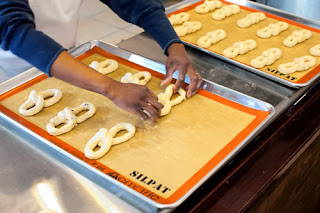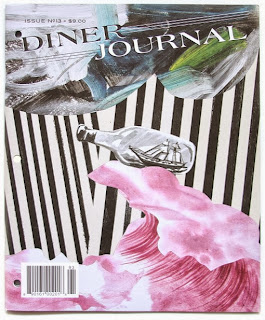| What has Nathan Myhrvold's Modernist Cuisine done for food? |
It’s easy to play the part of the skeptic. But it’s even
easier to pretend your pushing the boundaries of food when in fact you are
sitting in a laboratory trying to make strawberries taste like tomatoes in a
marinara sauce. When in fact, tomatoes worked just fine, thank you.
Polenta topped with a marinara sauce made of strawberries,
whose flavor profile mimics that of tomatoes, was one of 50 courses Nathan Myhrvold
served at a meal to Feran Adria and New York Times reporter Dwight Garner
recently at his food lab in Seattle. Myhrvold, who started Microsoft’s research
division, has climbed out of his Microsoft
Office Window(s) (that’s a double pun, by the way) and into the world of
molecular gastronomy, or “Modernist Cuisine,” as he has titled his multiple
books on the subject. Surrounded with millions of dollars and a sous-vide
vacuum sealer or two, he’s trying to push the boundaries of food by pushing
food out of the kitchen and into the laboratory.
The results are sometimes stunning, though seemingly neither
satisfying nor desirable. Like, a milkshake is made of goat milk, sugar, xantham gum
and whey protein.
Yum?
What strikes me again and again about this style of cooking
is that it fetishizes food. It begs to be playful but indulges in such
pettiness, excess and waste that the food itself is lost. Myhrvold gives
potatoes an “ultrasonic bath” before serving them in steak frites, which creates
cavities in the potatoes for a crispier fry. Is this any different than the laboratories
of McDonald’s seeking to make a more addictive fry through science? If you were served pink
slime at the Myhrvold household, would you eat it?
Perhaps Modernist Cuisine will stay within the sphere of
Silicon Valley, like a foodie version of Segway polo, and in a
few high-end restaurants scattered throughout the world. But most movements
that combine creativity, art and passion seek a higher good. Frankly, I’m
perplexed and fearful for what that higher good might be.
Modernist Cuisine does not answer to the things that draw us
to food in the first place: satisfaction, engagement, community, pleasure. Nor does it seem to answer any of the
questions we truly struggle with about the food world: it does not engage in a
conversation about health or agriculture or accessibility or hunger.
Instead, it draws laser-engraved images of Ferran Adria’s
face on a tortilla.
Tortillas without his face on them were just fine, thank
you.






